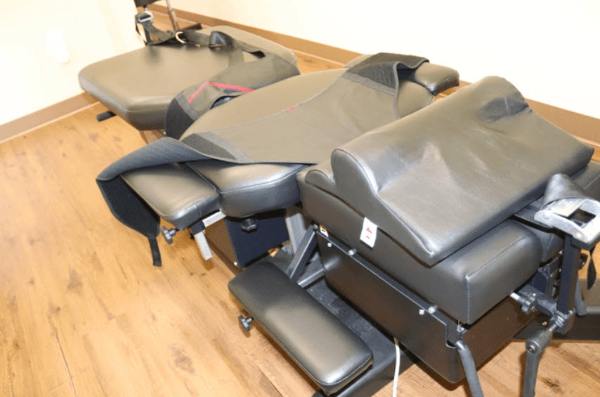Back pain can be debilitating. It can limit your mobility and significantly impact your quality of life. Non surgical spinal decompression is a treatment option that has gained popularity. It offers a non-invasive alternative to traditional surgical procedures. This therapy aims to alleviate pain and promote healing in the spine. It’s used to treat conditions like herniated discs, sciatica, and other spinal issues. Understanding non-surgical spinal decompression is crucial for those considering this treatment. In this guide, we’ll delve into the details of this therapy. We’ll discuss how it works, its benefits, potential risks, and what conditions it can treat. Whether you’re a patient or a healthcare provider, this comprehensive guide will provide valuable insights into non-surgical spinal decompression.
What is Non-Surgical Spinal Decompression?
Non-surgical spinal decompression is a therapeutic technique aimed at alleviating back pain. Unlike surgical options, it is non-invasive and does not require incisions or anesthesia. This treatment involves the use of a specialized table or device. It gently stretches the spine to relieve pressure on spinal discs and nerves. The procedure helps create negative pressure within the spinal discs. This allows bulging or herniated discs to retract and heal, reducing pain. Non-surgical spinal decompression contrasts with posterior spinal decompression surgery. The latter involves cutting into the body to relieve spinal pressure, making it more invasive. Many patients prefer this non-invasive approach for its safety and minimal recovery time. It can be a cost-effective alternative to surgery. This therapy can be a potential solution for those suffering from chronic back issues, providing relief without the need for surgery.
How Does Spinal Decompression Therapy Work?
Spinal decompression therapy works by utilizing a motorized traction table. The patient is strapped to the table, which gently moves to stretch and relax the spine. This movement creates negative pressure within spinal discs, reducing compression on nerves and discs. The negative pressure allows herniated or bulging discs to retract, alleviating pain. This process also enhances the flow of nutrients, oxygen, and fluids, promoting healing. A typical session lasts about 15 to 30+ minutes. It is painless and often described as relaxing. Some patients even fall asleep during treatment. Here is a summary of how spinal decompression therapy works:
- Gently stretches the spine to relieve pressure.
- Creates negative pressure to help discs retract.
- Promotes blood and nutrient flow to the area.
- Reduces nerve compression, alleviating pain.
Patients often undergo a series of sessions, spaced over several weeks, for maximum benefit. This frequency varies based on individual needs and severity of the condition. Each session builds on the progress of the last, gradually improving spinal health and reducing pain.
Conditions Treated by Non-Surgical Spinal Decompression
Non-surgical spinal decompression can address various spinal conditions. This makes it a versatile treatment option. It primarily targets issues that cause back and neck pain. Common conditions include herniated or bulging discs. These can cause significant discomfort and nerve pressure. Spinal decompression helps relieve this pressure. Degenerative disc disease is another condition that benefits from this therapy. As discs deteriorate, they may cause chronic pain. Decompression helps improve disc health and reduce symptoms. Here’s a list of conditions treated by non-surgical spinal decompression:
- Herniated or bulging discs
- Degenerative disc disease
- Sciatica and nerve pain
- Spinal stenosis
- Facet joint syndrome
Furthermore, patients with failed back surgery syndrome may also find relief. This therapy offers hope to those seeking non-surgical solutions. It’s important to consult a healthcare provider to determine if it’s suitable for your condition.
The Procedure: What to Expect During Spinal Decompression Therapy
Understanding the procedure helps ease anxiety about spinal decompression therapy. This non-invasive treatment is generally comfortable. Patients often lie on a motorized table during sessions. The treatment involves gentle stretching of the spine. This process creates negative pressure, which helps reposition discs and relieve nerve pressure. It’s a painless and relaxing experience for most patients. Sessions typically last about 15 to 30+ minutes. The practitioner monitors the process carefully, ensuring optimal settings. Patients can often read or listen to music during this time. Afterward, patients may experience slight soreness, similar to post-exercise aches. This is normal and typically subsides quickly. Proper hydration and rest can enhance the therapy’s benefits.
Benefits of Non-Surgical Spinal Decompression
Non-surgical spinal decompression offers several significant advantages for those suffering from chronic back pain. It provides a non-invasive alternative to surgery. Patients often experience relief without the recovery time that surgery demands. One of the main benefits is pain reduction. By alleviating pressure on spinal nerves, decompression therapy targets the source of pain. This approach helps restore function and mobility. Furthermore, this therapy promotes healing at the cellular level. It enhances blood flow to damaged areas, enabling faster recovery and regeneration. Consistent therapy may improve long-term spinal health. Here’s a summary of benefits:
- Minimizes the need for invasive surgery
- Reduces reliance on pain medications
- Enhances spinal flexibility and range of motion
- Supports natural disc healing and regeneration
By addressing the underlying causes, spinal decompression therapy fosters sustainable results. It improves overall spinal alignment and function. For many, it is a crucial part of a holistic health plan.
Potential Risks and Contraindications
While non-surgical spinal decompression is generally safe, it does carry some potential risks. Patients should consult with a healthcare provider before starting therapy. Not everyone is a suitable candidate. Certain conditions may contraindicate spinal decompression therapy. Conditions like fractures, tumors, or severe osteoporosis could make this treatment inappropriate. It’s essential to be aware of any discomfort experienced during sessions. A qualified professional should monitor progress to minimize risks. Most side effects are minor and temporary. Here’s a list of common contraindications:
- Pregnancy
- Metal implants in the spine
- Recent spinal surgery
- Advanced spinal disorders
Understanding contraindications ensures that patients receive optimal care. Proper evaluation is crucial for effective and safe treatment. Always prioritize a thorough diagnosis before beginning therapy.
Duration, Frequency, and Number of Sessions Required
The duration of each spinal decompression session typically lasts between 15 to 30+ minutes. The specific length depends on individual patient needs and the condition being treated. Patients often need multiple sessions to see results. A common treatment plan includes about 20 to 40 sessions over several weeks. Sessions are usually scheduled multiple times a week for maximum effectiveness. The frequency of sessions can vary. Initial treatments might be more frequent, transitioning to less frequent maintenance sessions. This helps to sustain long-term benefits and minimize discomfort. It’s important to follow the recommended schedule. Consistency is key to achieving optimal outcomes. Adjustments may be made based on progress and patient feedback throughout the treatment course.




